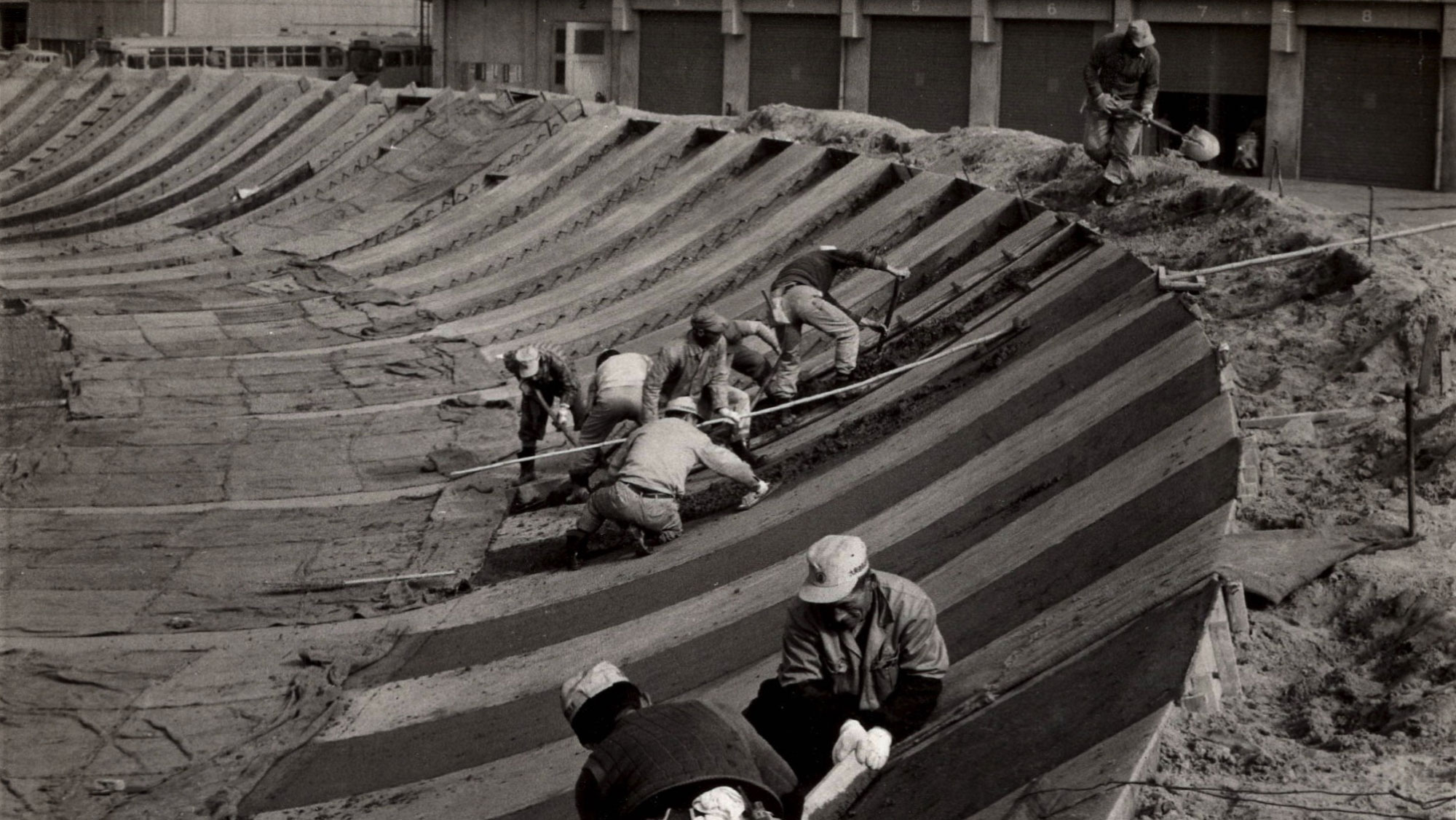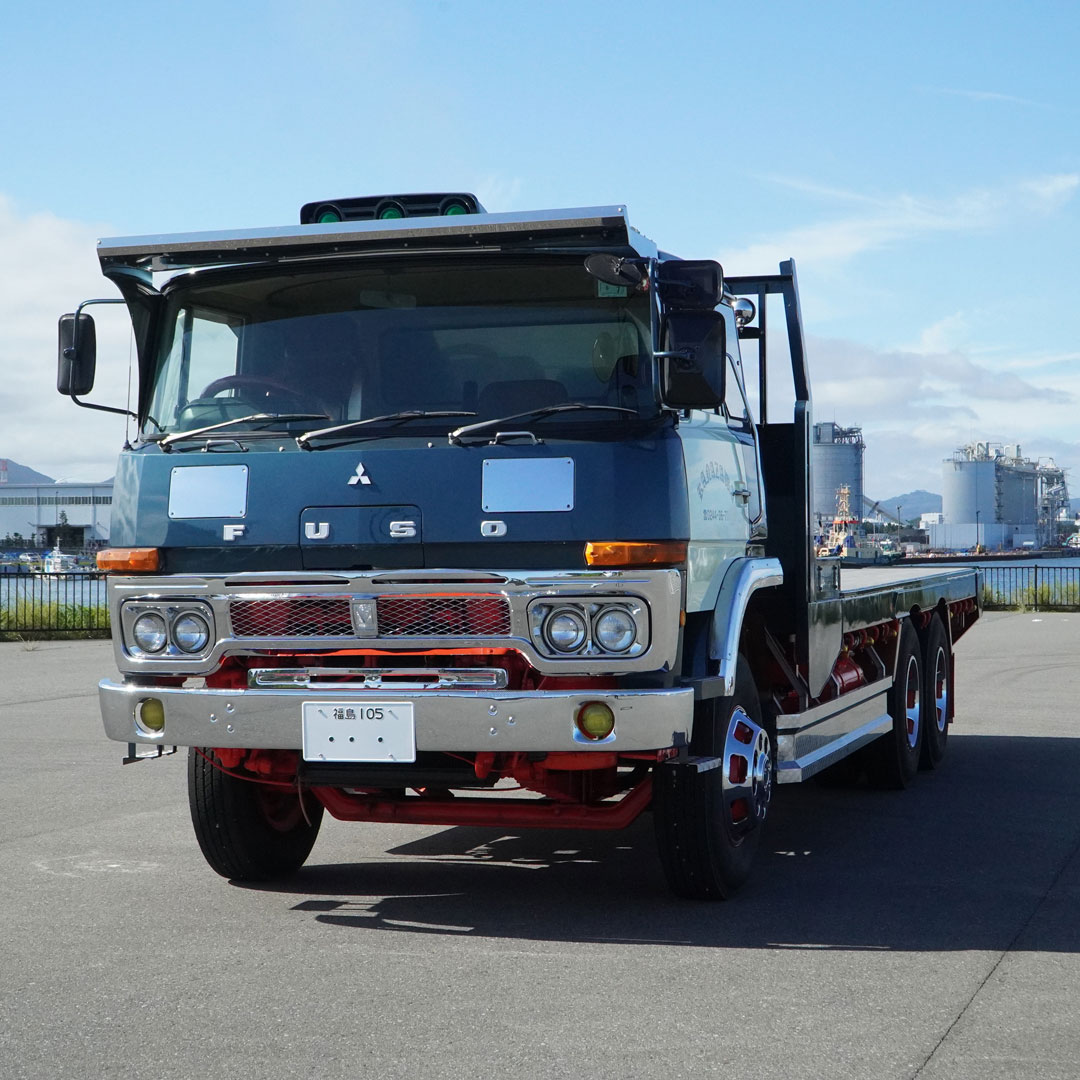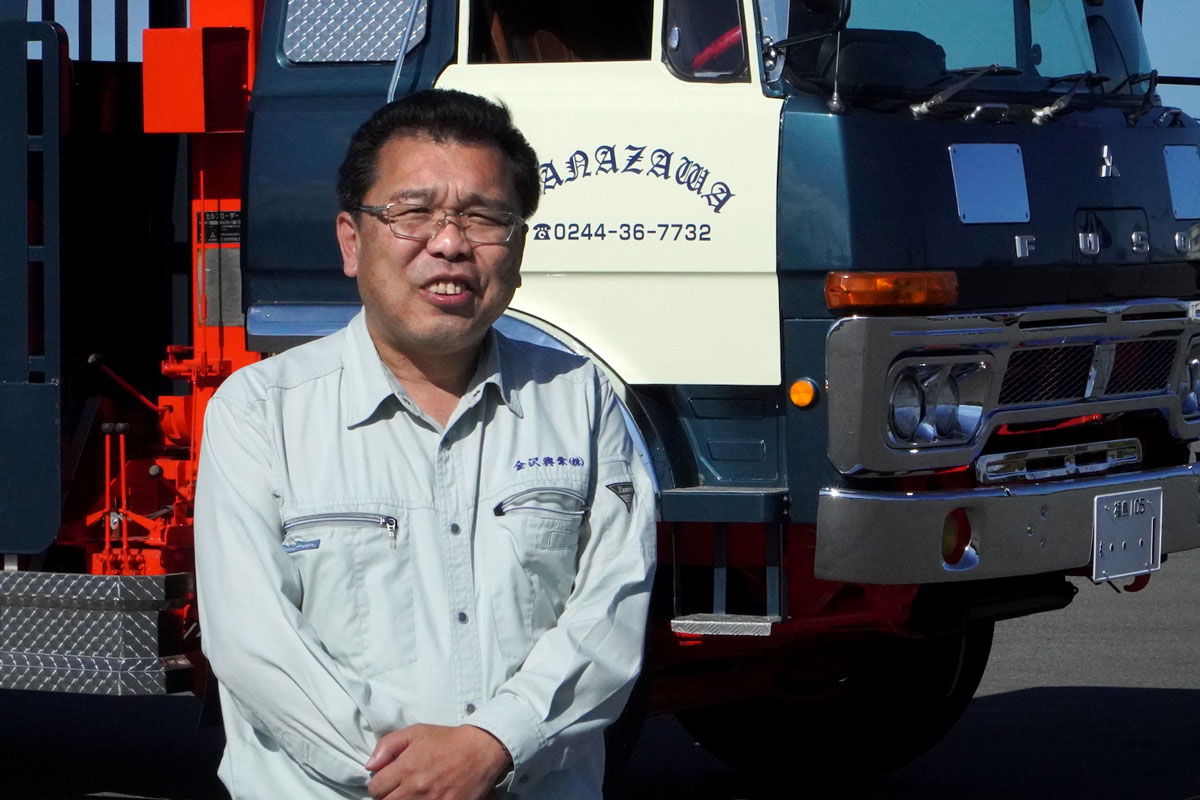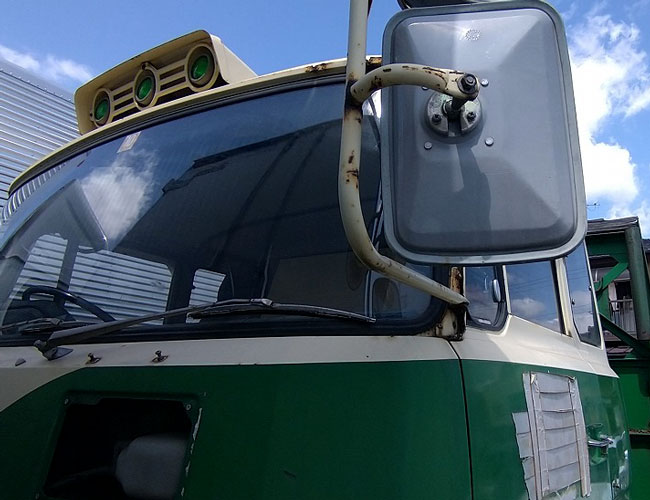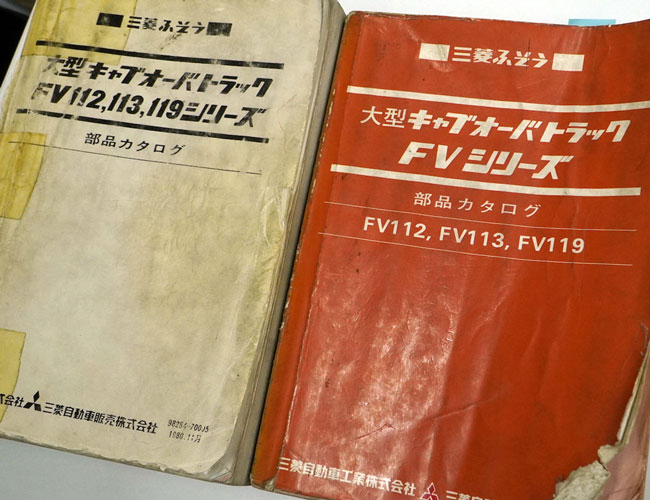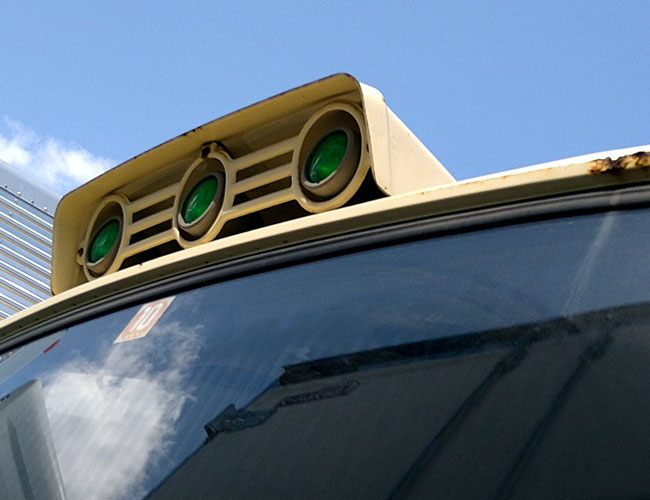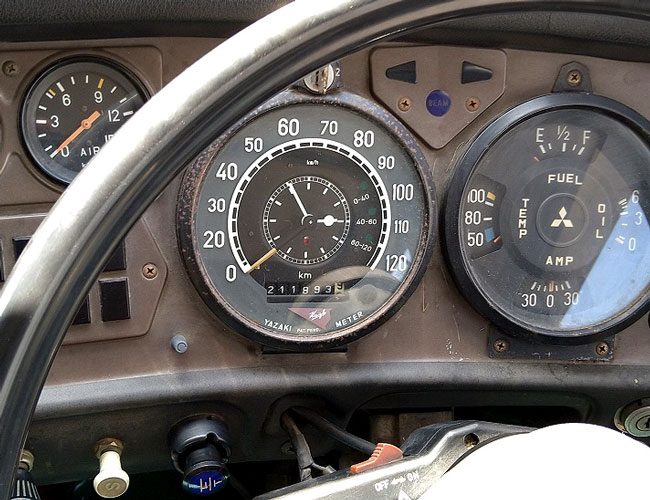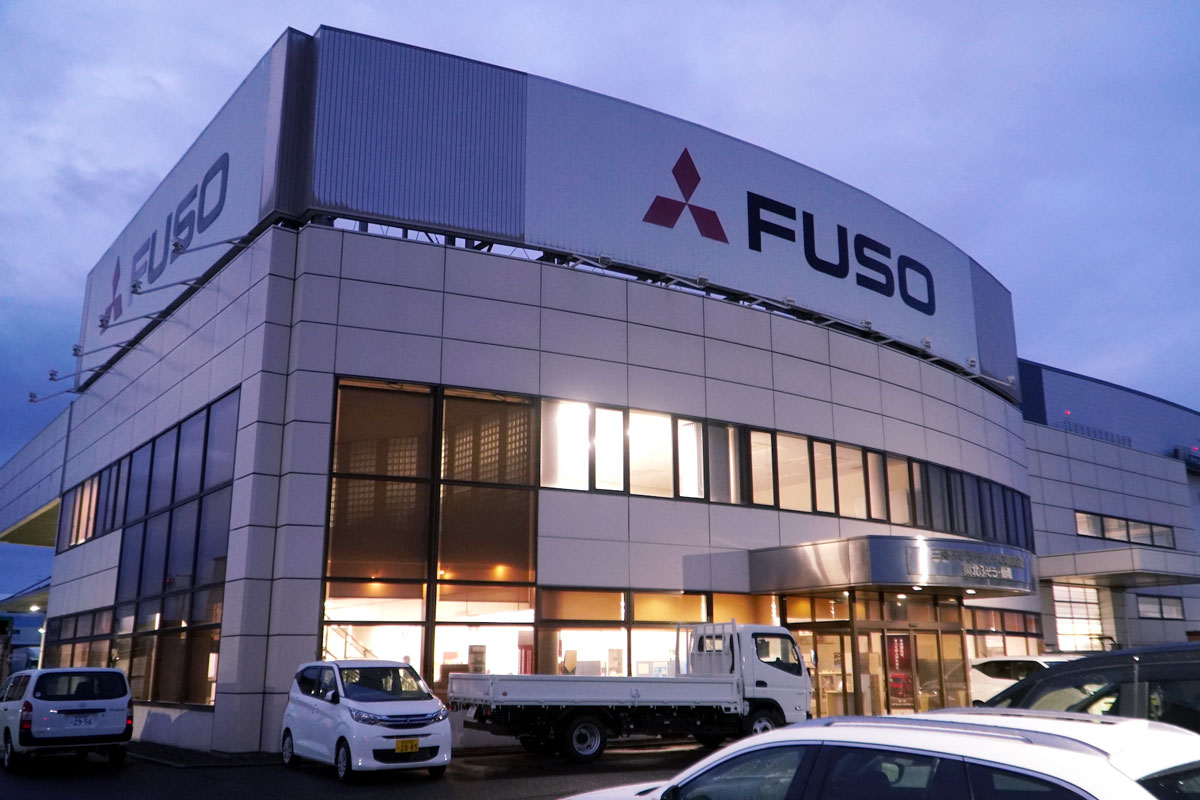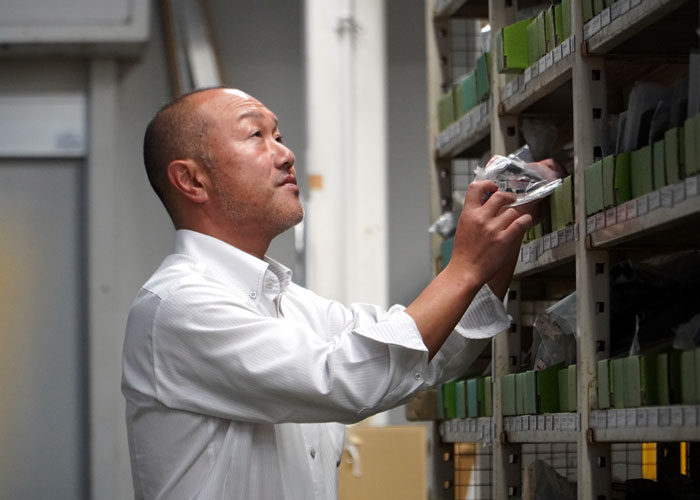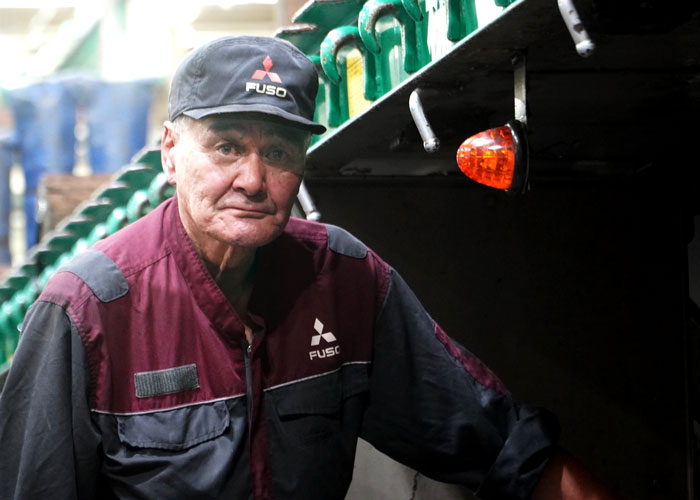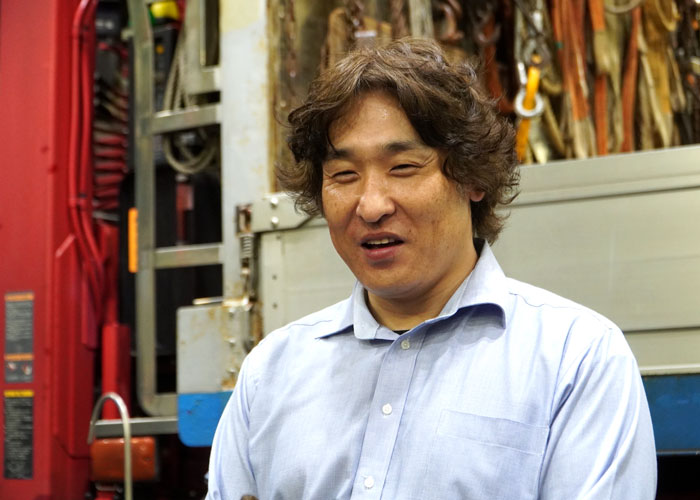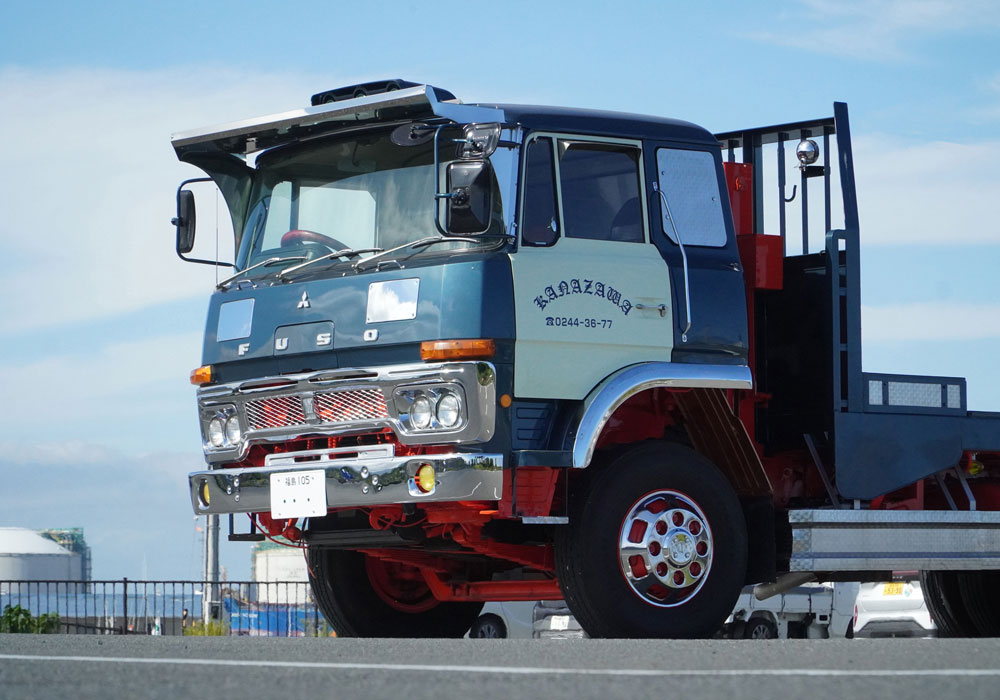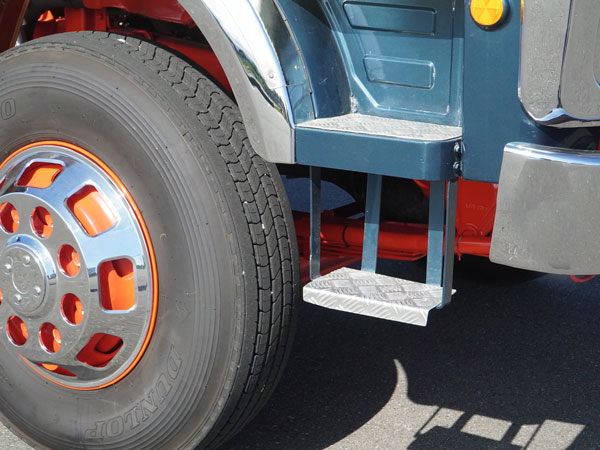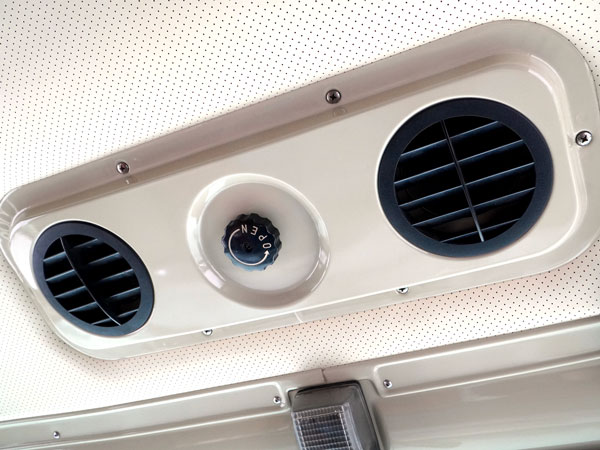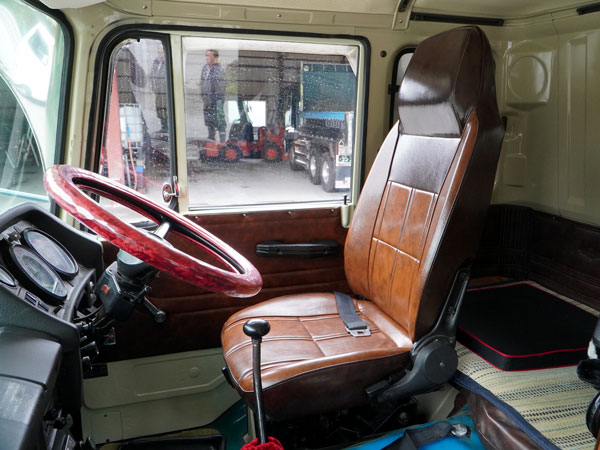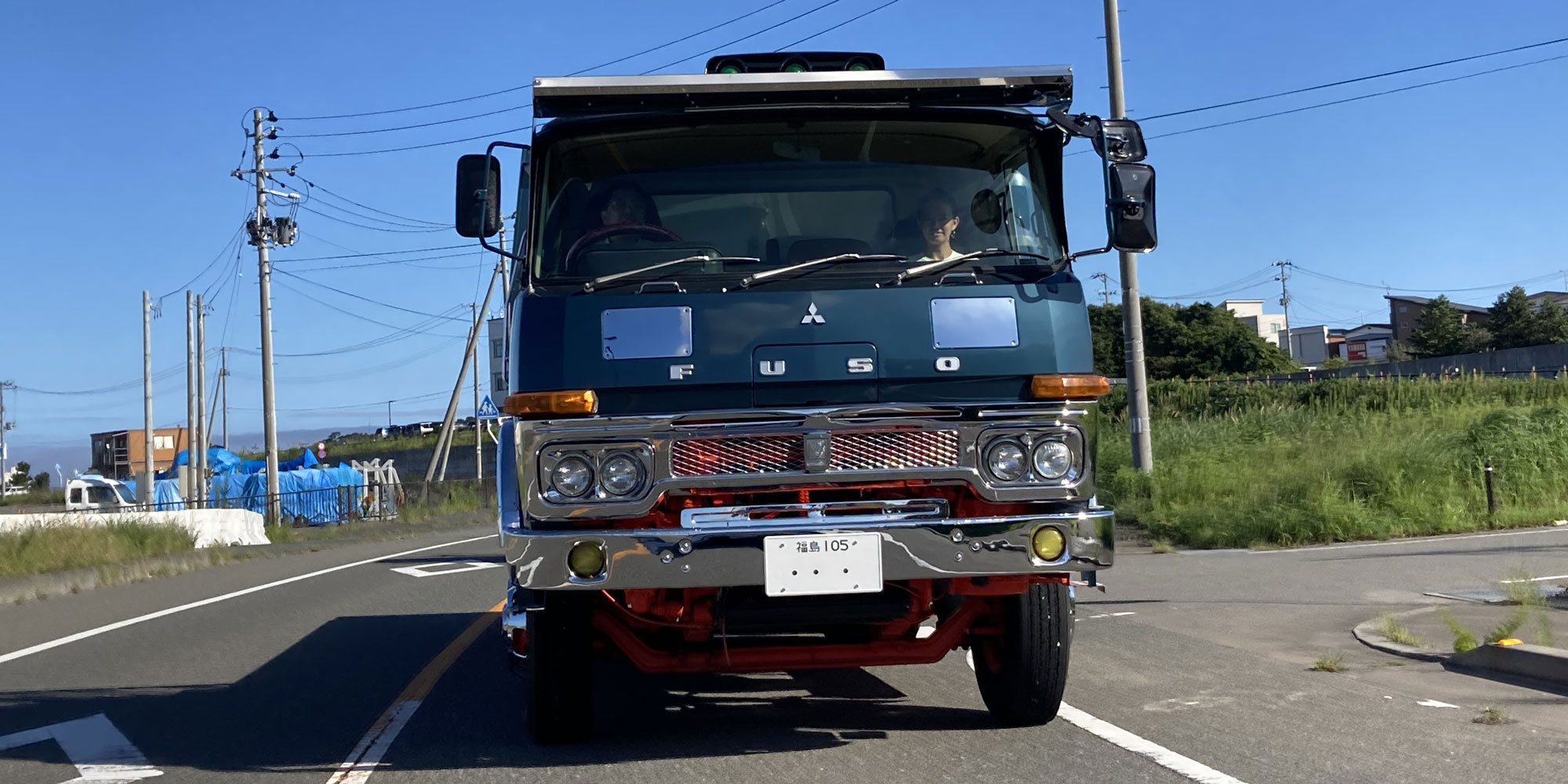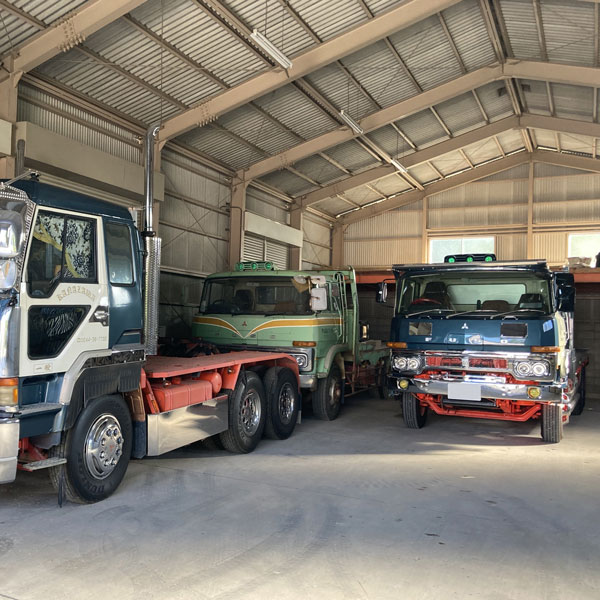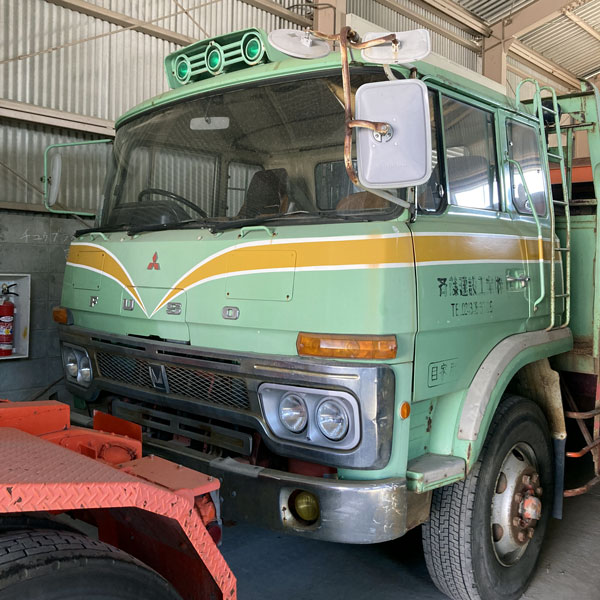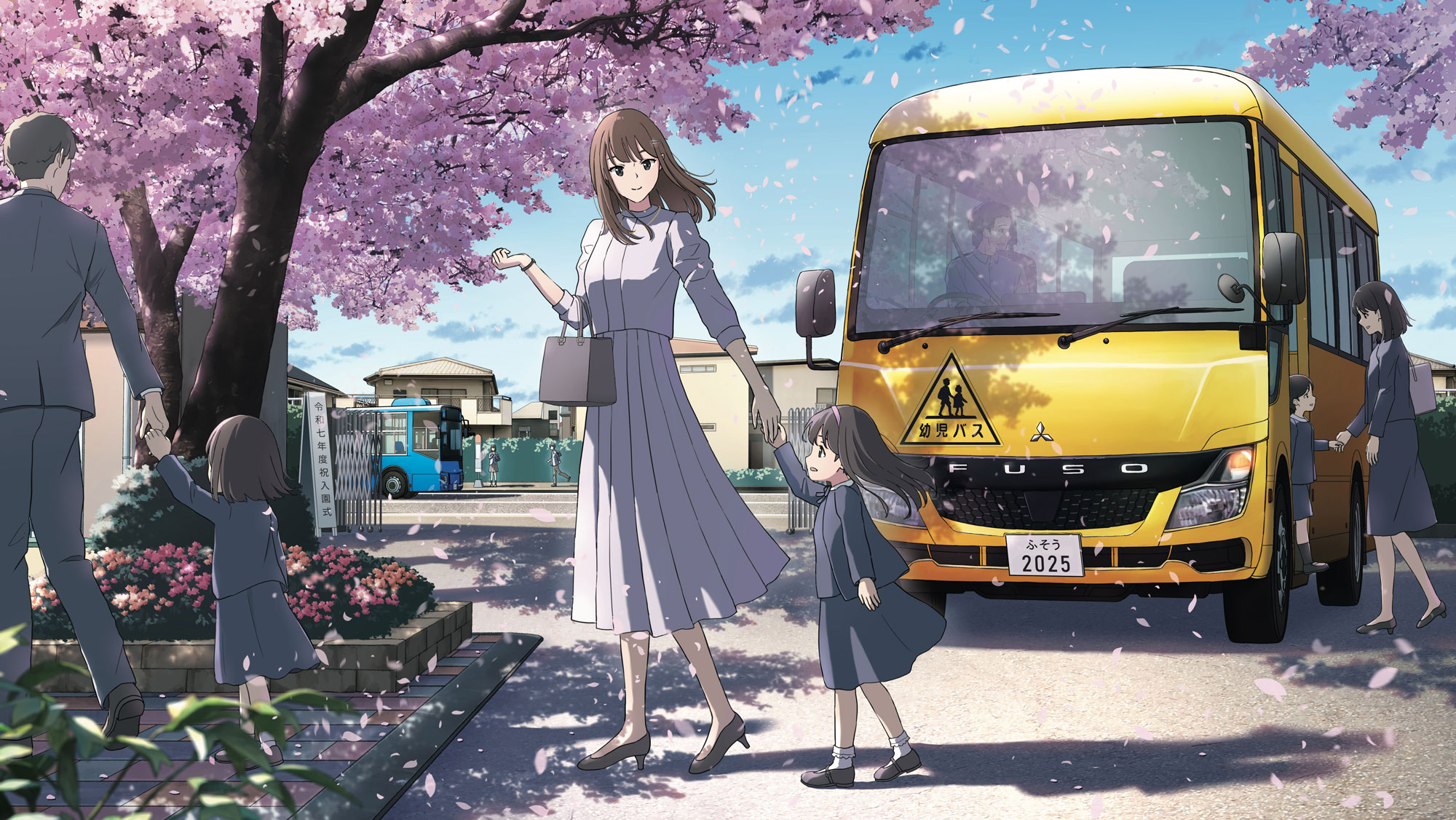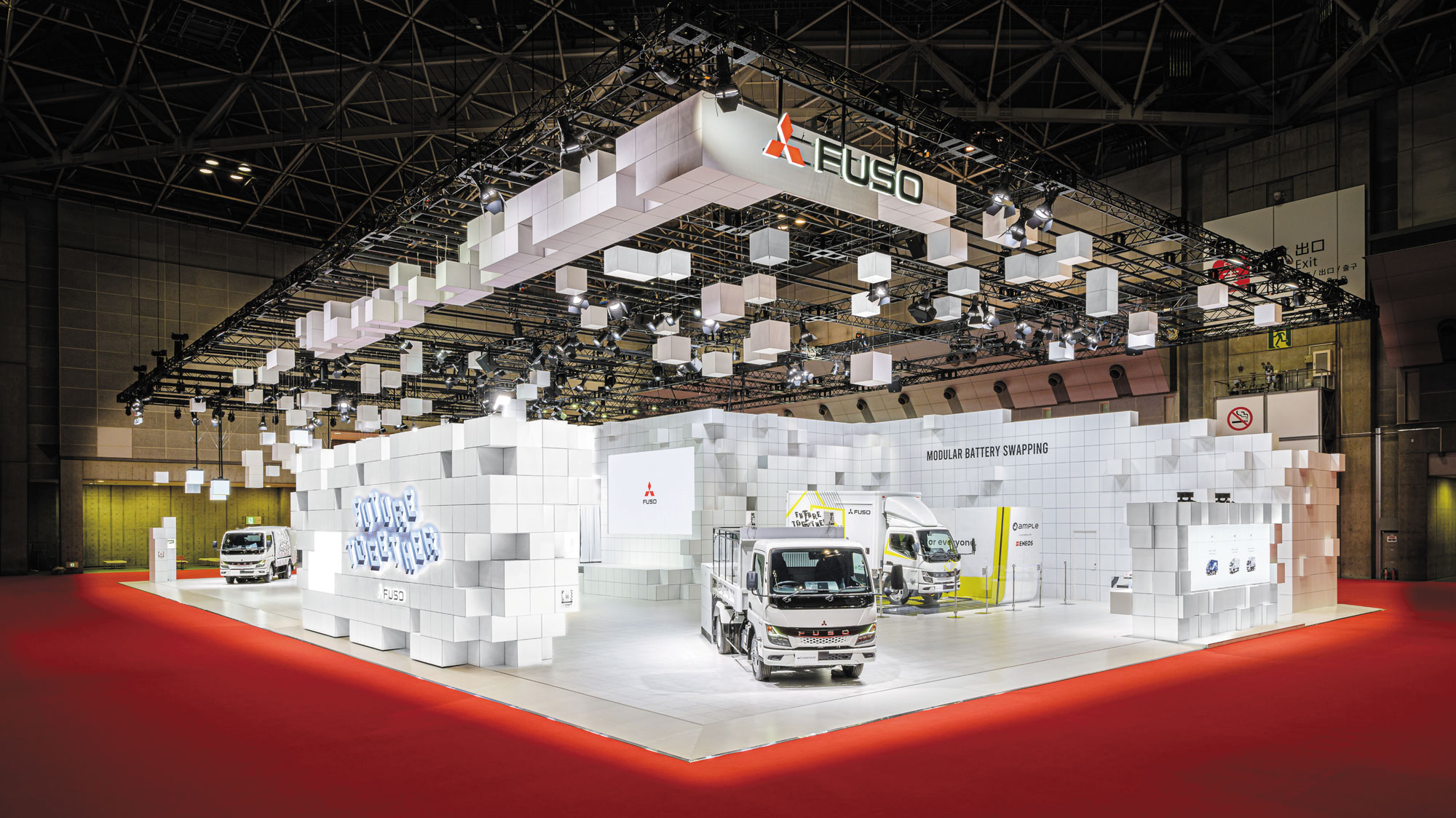A JOB WELL DONE
With the combined expertise of Mitsubishi Fuso’s master mechanics, specialists across various fields, and, most of all, Kanazawa’s unwavering dedication, the restoration of the FV was completed after a year of meticulous work. When he finally stood before the fully restored truck, a machine that had been a part of his youth, he felt goosebumps. Seeing it brought back to life after more than four decades, he could only describe the experience in one word:
“Amazing!” he said, grinning from ear to ear.
We had the chance to ride in the passenger seat, and despite the FV’s 45-year history, the truck’s engine start and driving performance were shockingly smooth. The interior was a nostalgic time capsule; its sturdy ride was characteristic of vintage trucks, complete with retro fittings and details. As the FV rolled down the seaside road, it truly felt like stepping back into the 1970s.
The truck’s presence doesn’t go unnoticed. Even those unfamiliar with heavy-duty vehicles couldn’t help but stop and admire it. Pedestrians snapped photos as it passed by, and during our interview, a curious driver followed the truck into the parking lot just to get a closer look. Within minutes, more enthusiasts gathered, eager to hear Kanazawa’s story and ask about the truck.
